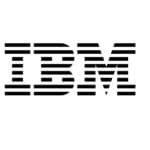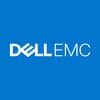Storage arrays play an important role in data centers, which require enormous storage capacity and high-speed network connection. Despite the growing popularity of cloud storage, arrays, particularly all-flash ones, are a critical part of many enterprise storage infrastructures. The top storage arrays provide extensive data storage and allow users to shift critical business workloads to locations that best support them.
What Does a Storage Array Do?
A storage array holds block, file, or object stored data on two or more storage devices. These devices may also connect to an entire network within a data center. Storage arrays are managed by a controller.
A storage area network (SAN) connects multiple storage devices, including arrays, in a data center or other local area. SAN arrays are still rising in prominence in the storage industry, especially ones with high-speed connections (such as Fibre channel) and support for NVMe. SANs meet the need for low-latency data center connections and connect data storage in an extensive network.
Also Read: Top 8 SAN Storage Arrays
Storage Array Technologies
RAID
Redundant Array of Independent Disks is a redundancy and backup technology for hard drives and solid-state drives. RAID uses a couple of different methods to copy or retain data, including mirroring (copying data exactly to the next drive in the array) and parity (a mathematical way to recalculate missing data).
The most commonly known levels of RAID are:
- 0, which uses neither mirroring nor parity but only striping (which doesn’t actually back up any data)
- 1, which uses disk mirroring to copy data in disk pairs
- 5, which uses striping and parity, which allows one disk failure
- 6, which also uses striping and parity and allows two disk failures
- 10, which combines 0 and 1 and uses both striping and mirroring
Some storage professionals no longer view RAID as a reliable backup or protection technology because it allows for so little failure, especially in arrays with more disks. RAID 5 and 6, the levels with some of the best protection, aren’t protective enough to meet ideal backup demand in current data center environments.
NVMe-oF
Non-Volatile Memory Express (NVMe) is an SSD technology that creates a direct connection to the central processing unit of a computer. By bypassing a controller (which SATA uses) and connecting to the PCIe bus instead, data can be processed more quickly and efficiently. NVMe speeds far outstrip other SSD technologies, such as SATA.
NVMe over Fabrics (NVMe-oF) for data centers makes stored data available over a network, rather than available on only one computer or server. It’s particularly helpful for organizations that need stored data available throughout their entire data centers, not siloed on just one piece of hardware. Storage arrays that offer NVMe-oF technology are still rare; NVMe-oF is very new. But it takes greater advantage of astronomical NVMe data processing rates.
How to Select a Storage Array
Data storage arrays vary in size, drive support, and specialization. Some support hard drives, while others only support flash. Most of the arrays below will feature flash storage, underscoring its importance in the future of data storage for critical enterprise workloads.
Consider the following questions when choosing a storage array for your enterprise:
- How big is your business? Most of the listed solutions are designed for enterprises, but some of them work better for smaller organizations. Additionally, some are expensive, and though they will be well worth the investment for some enterprises, they may be too large for others.
- Does the storage array in question have good performance management tools or support integrations with such tools? Performance management typically involves viewing storage capacity, speeds, and workloads. They can also include recommendations for shifting workloads to another location or scaling to add more space. Performance management helps businesses see their storage statistics more quickly and derive actionable data from them.
- Is it scalable? This is particularly important for businesses that plan to grow significantly in the few years after purchasing a new array. Most of the best enterprise-class storage solutions are somewhat scalable, or at least market themselves as such, but levels do vary. If you will need to grow quickly, make sure the array you choose has the option to do that with minimal hassle.
- Does it have good security or support enterprise-grade security tools? Stored data and critical application workloads should be protected.
- Does it provide any backup or disaster recovery features? Because many storage arrays are on premises, enterprises need methods of replicating or retrieving data in case of loss.
Also Read: Best All-Flash Storage Arrays: Vendors & Features
Best Storage Array Solutions
Jump to:
- Pure Storage FlashArray
- NetApp All-Flash FAS
- HPE Nimble
- IBM FlashSystem
- Synology DiskStation and FlashStation
- Dell EMC PowerScale
- Pure Storage FlashBlade
The following seven arrays are top-class storage solutions from six vendors. Our selection includes top choices for NAS, all-flash, and unstructured data. Some entries on this list cover multiple similar solutions from the same vendor.
Pure Storage FlashArray™
For enterprises that want the best speed and top quality
FlashArray, which includes //X for critical enterprise workloads and //C for less intensive ones, delivers incredible performance to compete with other long-established vendors (it didn’t launch until 2011). Users can monitor flash array performance through managed directories, choosing between a single file system root directory, directory per user, or directory per business sector.
FlashArray offers fast backups and operations for databases, supporting enterprises with heavy SQL and Oracle database needs. Upgrades often cause little to no downtime, nor do updates require much IT management on the part of Pure Storage customers. Users rave about Pure Storage’s support team, too. Though FlashArray isn’t a perfect solution for Hyper-V environments, users found that it performed well for their virtual machines.
Pure Storage implemented all-flash systems before the storage industry realized just how imperative it would be, and now they’re benefiting immensely. FlashArray is one of the top arrays on the market and easily competes with other tech companies both in speed and customer support.
Because of its extremely fast speeds, Pure Storage is not a good choice for cold or archived data, but rather for workloads that need seriously low latency. Fast-access storage is typically much more expensive than archive storage, and Pure Storage would waste enterprise budgets as a cold storage solution.
NetApp All-Flash FAS
For those who need to store both hot and cold data
NetApp AFF is an all-flash storage area network for critical workloads. Relatively easy to implement, AFF handles multiple large workloads, particularly databases, high-performance applications, and virtual machines, while maintaining high speeds.
NetApp AFF supports iSCSI and Fibre Channel networks and NVMe-over-Fibre-Channel connections. AFF can create snapshots for data backup. SnapMirror, a data replication and DR technology, creates off-site replications of data in case a disaster destroys the initial copy.
One of the primary benefits of AFF is its Fabric Pool technology. Using Fabric Pool, NetApp arrays automatically send inactive data to less expensive object storage. Tiering is dependent on the data’s status — cold or hot. Fabric Pool saves money by transferring data to cheaper storage platforms if it doesn’t require regular low-latency access. Fabric Pool supports object storage platforms like Microsoft Azure Blob, Alibaba Cloud, and IBM Cloud.
HPE Nimble
For businesses that want built-in intelligence
HPE’s all-flash array, acquired in 2017 when HPE purchased storage company Nimble, offers scalable hybrid cloud storage. Nimble uses what HPE calls dHCI, or disaggregated hyper-converged infrastructure. dHCI, not quite converged or hyper-converged infrastructure, allows users to scale which aspect — storage, compute, or networking — they want when they want.
Customers also take advantage of intelligent predictive platform HPE InfoSight, which notifies customers when problems arise, applications go down, or the array needs to scale to compensate for growth. HPE InfoSight connects directly to the dHCI stack.
Nimble provides disaster recovery replication snapshots, including for Hyper-V virtual machines. The replication snapshots can be extended to storage arrays in other physical locations.
Though some customers had complaints about HPE’s support availability compared to Nimble, users still spoke of the training and support provided for new customers.
IBM FlashSystem
FlashSystem is IBM’s all-flash array that supports container environments through Red Hat and Kubernetes Container Storage Interface. FlashSystem users can use IBM HyperSwap for failover if initial hardware should go down.
FlashSystem 5200, one of the newest arrays, offers all-NVMe flash and over a petabyte of available storage capacity. FlashSystem also includes IBM’s new Cloud Satellite, which allows customers to flexibly manage and deploy cloud environments for their storage. Cloud Satellite makes available a variety of vendors and clouds so that users can select the public, private, on-premises, or hybrid environments they need.
IBM provides Storage Insights for performance and capacity, which users can manage through a pane of glass. Storage Insights offers intelligent analytics that identify issues and areas for optimization.
Perhaps the most promising feature that FlashSystem boasts is its ability to harness NVMe over Fabrics. Though a new data center technology, NVMe-oF is incredibly promising: it extends NVMe flash speeds (the highest persistent memory speeds available today) to an entire data center. These storage speeds aren’t limited to one computer or device but rather can be accessed across an entire network, through technologies such as Fibre Channel or InfiniBand. Including NVMe-oF capability is a prescient decision for major storage array vendors, and it’s one of the standout elements of FlashSystem.
Synology DiskStation and FlashStation
For enterprises that use NAS heavily
Synology is the top of their game in network-attached storage. For small businesses, the DiskStation line of NAS devices offers reliability, capacity, and the DiskStation Manager software, which serves a type of operating system for all Synology DS devices. Many DiskStation devices also have NVMe ports, which not all business-grade NAS hardware does. The RX, RS, and DX lines are also geared toward small and medium-sized businesses.
Synology FlashStation (FS), intended for enterprises, has entirely flash 24-bay arrays. Synology also provides expansion units, such as the 24-bay Fx2421, for scaling storage with FlashStation.
FlashStation FS6400, one of Synology’s newest arrays, particularly shines with its backup and data protection features. DiskStation Manager provides support for virtualization, offering a Virtual Machine Manager for running VMs and creating backup snapshots.
The FS6400 runs the iSCSI protocol and also supports virtual environments, such as VMWare VSphere and Microsoft Hyper-V. Though it doesn’t offer NVME ports for faster SSD connection, it does have two Gigabit Ethernet ports. For medium-sized businesses and enterprises that still rely on network-attached storage and SATA SSDs (still a low cost, low latency choice), Synology FlashStation is an ideal choice.
Dell EMC PowerScale
For businesses that want to store unstructured data in network-attached storage
PowerScale is one of Dell’s most recent network-attached storage solutions. This array stores data in a single giant lake, intended to decrease or remove data silos for businesses by grouping all their data in one place.
Unstructured data (particularly object-stored data) is soaring in both amount and popularity, and PowerScale offers storage for what’s becoming the majority of business data. Users can scale by simply adding more nodes, which doesn’t detract from either speed or performance once added. PowerScale works for both cloud and on-premises workloads.
PowerScale is expensive, as many of the other solutions on this list are, and isn’t ideal storage for blocks. However, the ability to easily expand when needed makes it a solution for companies that need flexible NAS and room to grow.
Because it can hold so much unstructured data, PowerScale is a great choice for storing large media files; it’s a popular solution for visual effects film storage.
Pure Storage FlashBlade®
For on-premises storage with top speeds and ransomware protection
Pure Storage appears again on this list, with good reason: its comparatively early approach to all-flash data center storage resulted in multiple exceptional products. FlashBlade, different in approach from FlashArray, is a storage solution intended to bring public-cloud-level features to on-premises storage. Blades, pieces of hardware that plug into company servers, create easily scalable storage (to add more, you just add more blades).
FlashBlade is intended to store both file and object data, an important step for data centers prioritizing object-stored data. Object storage provides as of yet unlimited storage for unstructured data, which makes up a large portion of enterprise data. By offering an object storage array solution, Pure Storage improves its enterprise offerings.
FlashBlade offers both file and object replication and Rapid Restore, a program for integration with data protection vendors. Users can take data snapshots in FlashBlade and use snapshots to perform backups, a tactic intended to guard against ransomware attacks (criminals can’t use snapshots to demand ransom).









